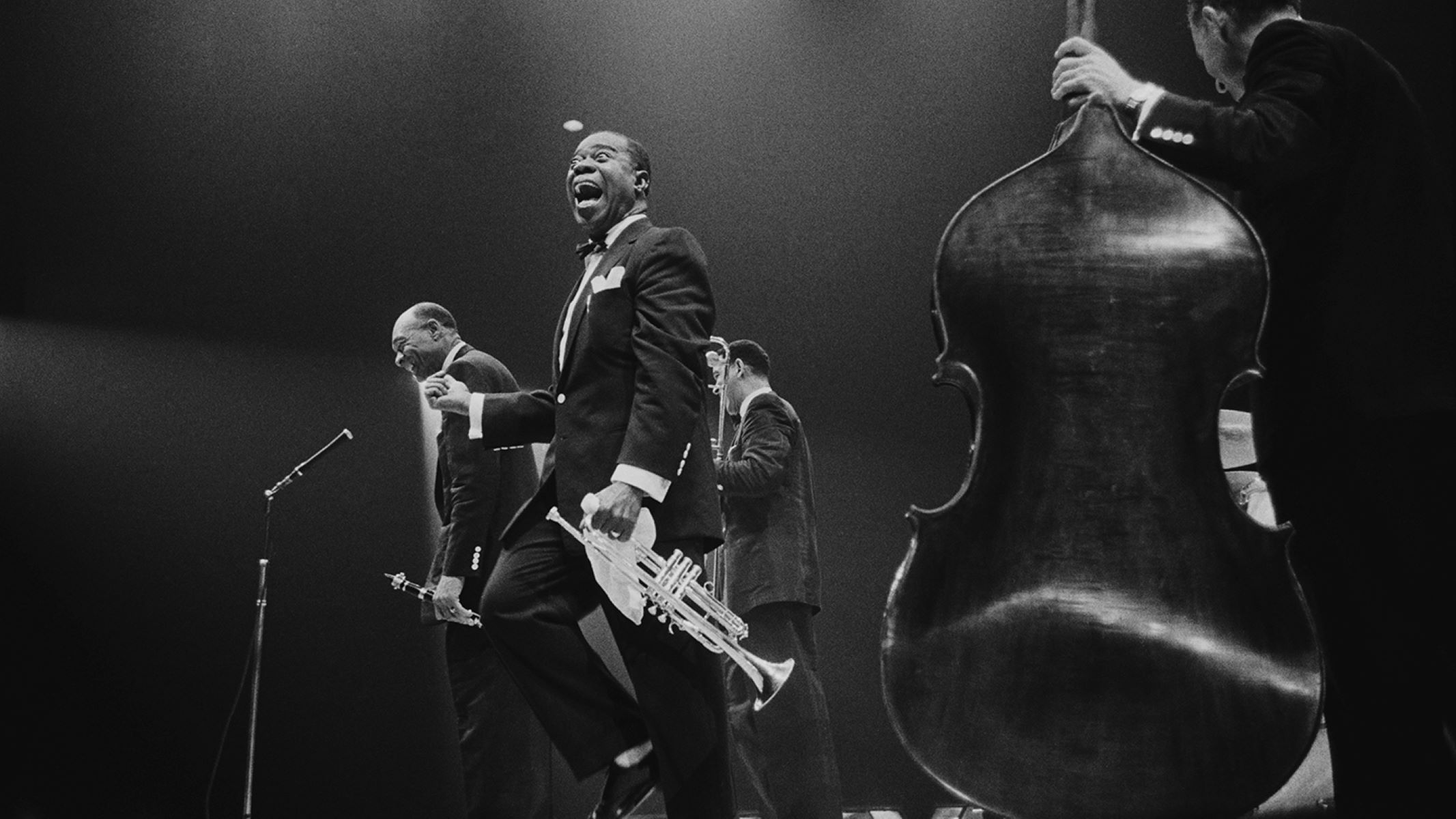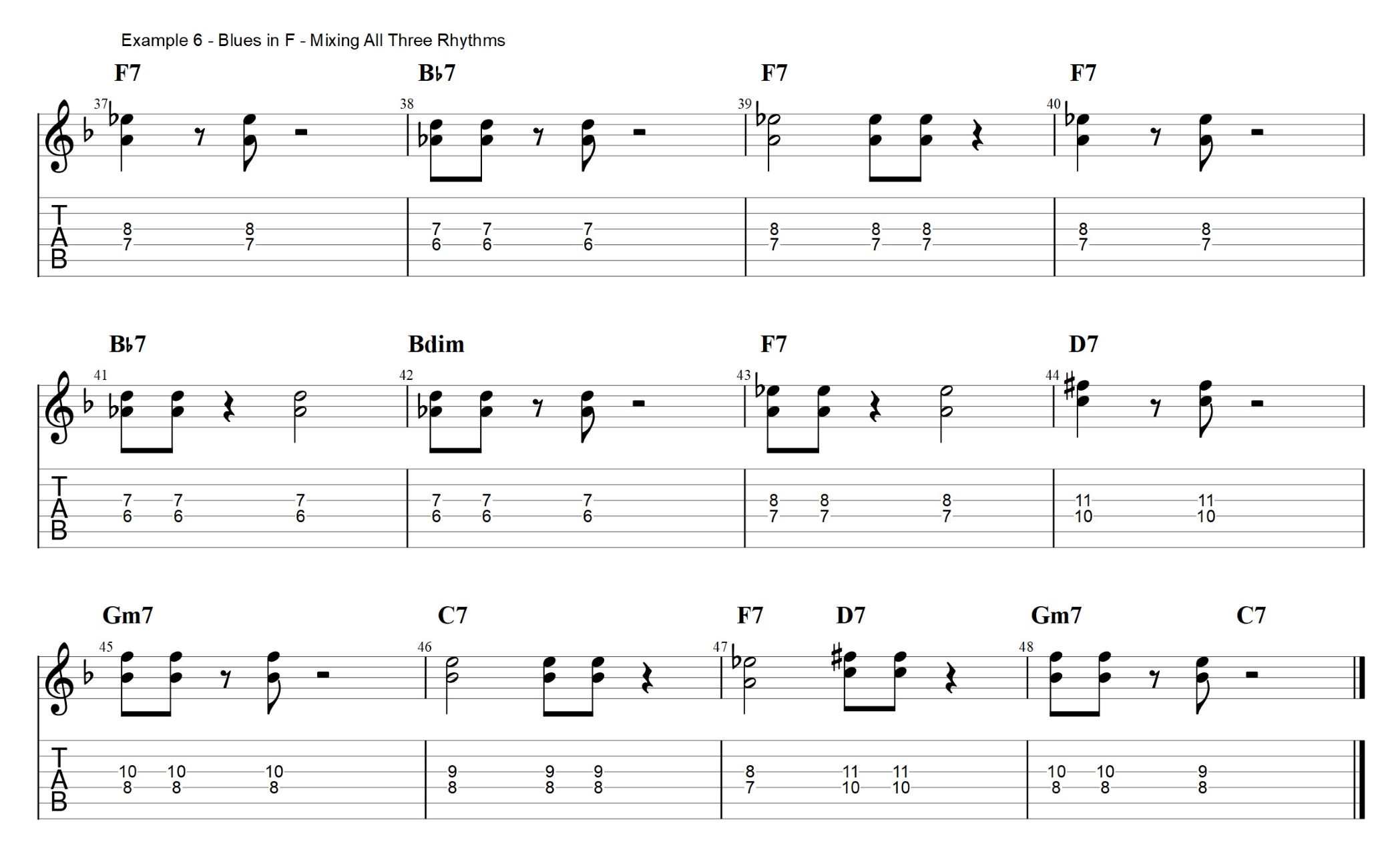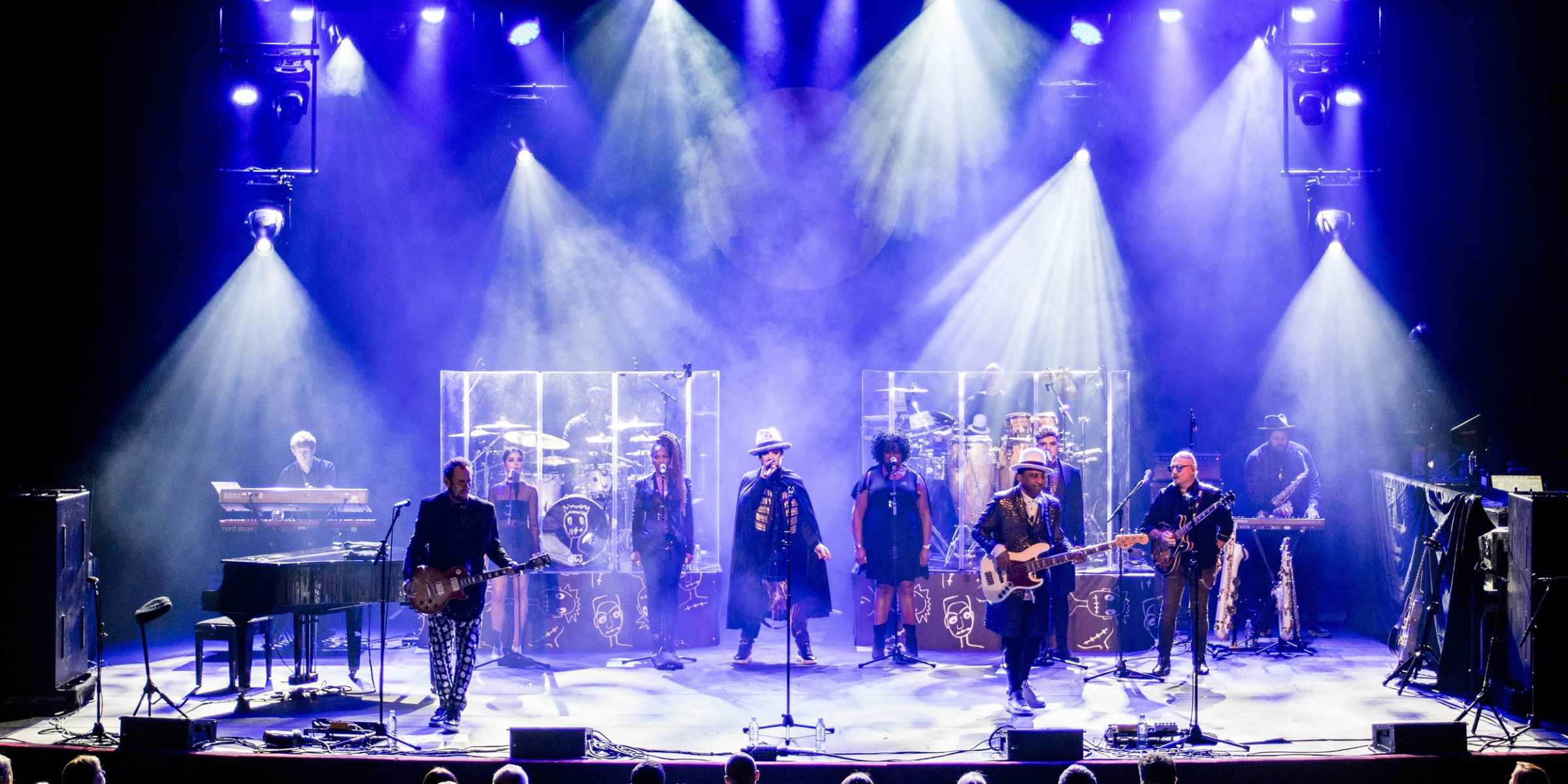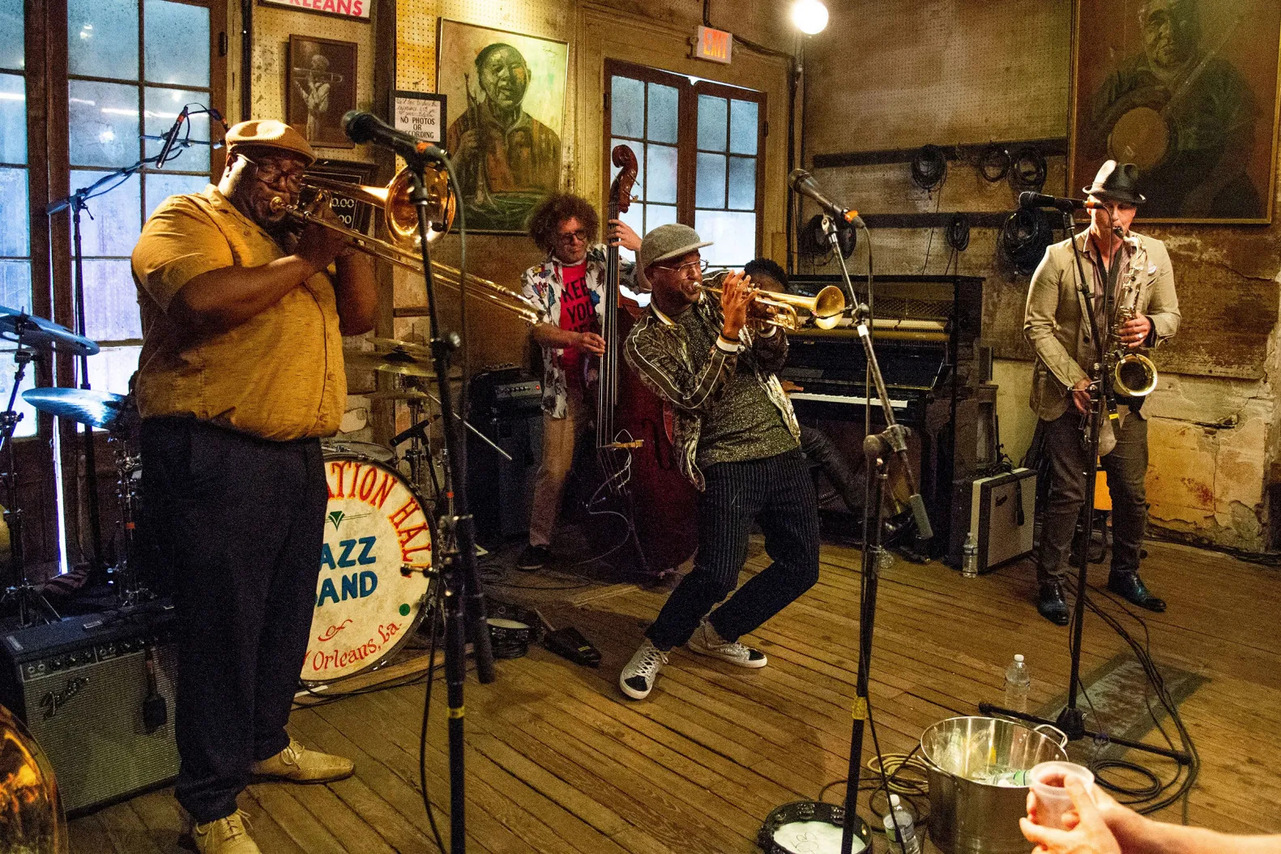

Jazz
What Is Jazz Fusion?
Modified: February 24, 2024
Discover the unique blend of Jazz and other genres in Jazz Fusion. Experience the innovation, improvisation, and creativity of this captivating musical style.
(Many of the links in this article redirect to a specific reviewed product. Your purchase of these products through affiliate links helps to generate commission for AudioLover.com, at no extra cost. Learn more)
Table of Contents
Introduction
Jazz fusion, also known as fusion jazz, is a unique genre that emerged in the late 1960s and early 1970s. It combines the improvisational elements of jazz with the styles and techniques of other genres, such as rock, funk, and electronic music. This fusion of different musical influences resulted in a captivating and innovative sound that pushed the boundaries of traditional jazz.
At its core, jazz fusion is about bridging the gap between jazz and other genres, incorporating elements like electric instruments, complex rhythms, and experimental compositions. It was a bold departure from the traditional conventions of jazz, embracing a more contemporary and dynamic approach.
Jazz fusion gained traction during a time of significant cultural and musical change. It was a product of the sociopolitical climate, influenced by the psychedelic movement, the rise of rock music, and the experimentation happening across various artistic fields. Musicians sought to break free from the confines of traditional jazz, exploring new sonic landscapes and pushing the boundaries of their instruments.
What sets jazz fusion apart is its emphasis on virtuosic playing, intricate arrangements, and extended improvisations. It is a genre that thrives on the technical prowess of its musicians, who seamlessly blend diverse musical elements into a cohesive whole. This fusion of styles allows for endless possibilities and opens up new avenues for creativity and self-expression.
Over the years, jazz fusion has evolved and diversified, incorporating influences from different cultures and musical traditions. It has become a global phenomenon, with artists from all corners of the world embracing and contributing to the genre.
In this article, we will delve into the history of jazz fusion, explore its characteristics and influences, highlight some of the prominent musicians in the genre, showcase examples of jazz fusion songs, discuss the criticism and controversy surrounding it, and examine its lasting impact and legacy.
History of Jazz Fusion
Jazz fusion emerged during a time of significant change in the music industry and cultural landscape. It was born out of a desire to break free from the traditional confines of jazz and explore new sonic territories. The roots of jazz fusion can be traced back to the late 1960s and early 1970s when musicians began experimenting with blending jazz with other genres.
One of the key figures in the early development of jazz fusion was Miles Davis. With his groundbreaking albums such as “In a Silent Way” (1969) and “Bitches Brew” (1970), Davis revolutionized the jazz landscape by incorporating elements of rock, funk, and electronic music. These albums featured electric instruments, psychedelic textures, and extended improvisations, marking a departure from Davis’ previous bebop and cool jazz recordings.
During the same period, other influential musicians were also exploring the fusion of jazz and different genres. Artists like Herbie Hancock, Chick Corea, and Weather Report pushed the boundaries of jazz by incorporating elements of funk, Latin music, and avant-garde experimentation. They embraced electric keyboards, fusion rhythms, and complex compositions to create a new sound that captivated audiences.
Jazz fusion gained mainstream attention in the 1970s, attracting a broader audience through its fusion of jazz and rock influences. Bands like Return to Forever, Mahavishnu Orchestra, and The Brecker Brothers emerged during this time and helped popularize the genre. These bands featured virtuosic instrumentalists who blended the improvisation and complexity of jazz with the power and energy of rock music.
As the genre continued to evolve, fusion elements also found their way into popular music. Artists like Stevie Wonder, David Bowie, and Joni Mitchell incorporated jazz fusion elements into their songs, contributing to the genre’s broader appeal.
In the 1980s and beyond, jazz fusion expanded to incorporate influences from world music, hip-hop, and electronic genres. Musicians such as Pat Metheny, John McLaughlin, and Snarky Puppy pushed the boundaries even further, fusing jazz with elements of traditional music from around the world and incorporating modern electronic production techniques into their compositions.
Today, jazz fusion remains a vibrant and evolving genre. It continues to push boundaries, incorporating new influences and embracing diverse musical traditions. From small underground scenes to major music festivals, jazz fusion continues to captivate audiences and inspire musicians around the world.
Characteristics of Jazz Fusion
Jazz fusion is characterized by a unique combination of elements from jazz and other musical genres. It is a genre that thrives on innovation, experimentation, and virtuosic musicianship. Here are some key characteristics that define jazz fusion:
- Blending of Genres: At its core, jazz fusion is about merging different musical styles and genres. It seamlessly incorporates elements from jazz, rock, funk, R&B, Latin, and other genres to create a rich and diverse sonic landscape.
- Electric Instruments: Electric guitars, bass guitars, keyboards, and synthesizers are commonly used in jazz fusion. These instruments provide a broader range of sounds and tones, allowing for greater experimentation and sonic exploration.
- Virtuosic Playing: Jazz fusion is known for its technically demanding compositions and virtuosic performances. Musicians showcase their technical prowess through intricate melodies, complex chord progressions, and lightning-fast improvisations.
- Complex Rhythms: Fusion music often incorporates complex time signatures and rhythmic patterns. It draws inspiration from various genres, such as funk and Latin, to create intricate and layered rhythms that add depth and energy to the music.
- Extended Improvisations: Improvisation is a fundamental aspect of jazz fusion. Musicians have the freedom to explore and experiment within the structure of the composition, taking extended solos and interacting with the other musicians on stage.
- Experimentation and Innovation: Jazz fusion pushes the boundaries of traditional jazz by incorporating experimental techniques, unconventional song structures, and unconventional instruments. It encourages musicians to think outside the box and explore new sonic possibilities.
- Dynamic and Expressive: Fusion music is known for its dynamic range, moving seamlessly between soft and introspective passages to explosive and high-energy moments. It allows for emotional expression and showcases the versatility of the musicians.
- Creative Compositions: Jazz fusion compositions are often complex and intricate, featuring multi-layered melodies and harmonies. Musicians explore different harmonic structures, modalities, and chord progressions, resulting in fresh and innovative compositions.
These characteristics are not exhaustive but provide a glimpse into the diverse and ever-evolving nature of jazz fusion. It is a genre that continues to push boundaries, blend genres, and inspire musicians to create new and exciting music.
Influences on Jazz Fusion
Jazz fusion is a genre that draws from a wide range of musical influences, incorporating elements from various genres and traditions. These influences have played a pivotal role in shaping the sound and evolution of jazz fusion. Here are some key influences on jazz fusion:
- Rock Music: The emergence of rock music in the 1960s had a profound impact on jazz fusion. Artists like Jimi Hendrix and The Beatles introduced new sounds and approaches to music, which inspired jazz musicians to experiment with electric instruments, amplification, and rock rhythms.
- Funk: The rhythmic grooves and syncopated beats of funk music heavily influenced jazz fusion. Artists like James Brown and Sly and the Family Stone introduced a new level of rhythmic complexity and emphasis on the “groove.” This funk influence can be heard in the basslines, drum patterns, and overall rhythmic feel of jazz fusion compositions.
- Latin Music: Latin music, with its infectious rhythms and melodic sensibilities, has left an indelible mark on jazz fusion. Musicians like Chick Corea and Carlos Santana drew inspiration from Afro-Cuban and Brazilian music, incorporating elements like clave patterns, bossa nova rhythms, and Latin percussion instruments into their compositions.
- Avant-Garde and Free Jazz: The avant-garde and free jazz movements of the 1960s pushed the boundaries of jazz and embraced experimental approaches to music. Artists like Ornette Coleman and John Coltrane explored unconventional scales, extended techniques, and unconventional song structures. These influences can be heard in the adventurous and exploratory spirit of jazz fusion.
- Classical Music: Classical music has also played a significant role in shaping jazz fusion. Artists like Keith Emerson and Frank Zappa drew inspiration from composers like Stravinsky and Bartók, incorporating classical harmonies and orchestral arrangements into their fusion compositions. The fusion of jazz and classical elements created a unique and sophisticated sound.
- World Music: Jazz fusion has embraced influences from various world music traditions. Artists like Al Di Meola and John McLaughlin incorporated elements of Indian classical music, flamenco, and African rhythms into their compositions, expanding the sonic palette of jazz fusion and showcasing the universality of music.
- Electronic Music: As technology advanced, jazz fusion began incorporating electronic elements into its sound. Artists like Herbie Hancock and Weather Report utilized synthesizers, drum machines, and electronic effects to create innovative sounds and textures. This fusion of jazz and electronic music gave rise to a subgenre known as “electro-jazz.”
These influences, among others, have contributed to the rich and diverse tapestry of jazz fusion. By fusing these different musical traditions, jazz fusion has been able to constantly evolve and defy categorization, creating a genre that is unique, vibrant, and ever-changing.
Prominent Jazz Fusion Musicians
Jazz fusion has been home to a plethora of exceptionally talented musicians who have made significant contributions to the genre and pushed its boundaries. These artists have left an indelible mark on jazz fusion, delivering captivating performances and groundbreaking compositions. Here are some prominent jazz fusion musicians:
- Miles Davis: Widely regarded as one of the pioneers of jazz fusion, Miles Davis played a pivotal role in shaping the genre. His albums “In a Silent Way” and “Bitches Brew” are considered cornerstones of jazz fusion, blending elements of rock, funk, and electronic music.
- Herbie Hancock: A true innovator, Herbie Hancock has consistently pushed boundaries with his fusion-infused jazz. His album “Head Hunters” is a landmark fusion record, seamlessly blending jazz with funk and featuring the iconic track “Chameleon.”
- Chick Corea: Known for his virtuosic piano playing, Chick Corea was instrumental in the development of jazz fusion. His band, Return to Forever, produced influential albums like “Romantic Warrior,” showcasing complex compositions and dynamic improvisations.
- Weather Report: Led by keyboardist Joe Zawinul and saxophonist Wayne Shorter, Weather Report combined elements of jazz, rock, and world music. Their albums like “Heavy Weather” are revered for their fusion of intricate compositions and improvisational brilliance.
- John McLaughlin: Renowned for his blazing guitar playing, John McLaughlin became a key figure in the fusion movement. His work with the Mahavishnu Orchestra, particularly their album “The Inner Mounting Flame,” demonstrated his unparalleled technical prowess and adventurous spirit.
- Jaco Pastorius: An influential bassist, Jaco Pastorius brought a profound sense of melody and virtuosity to jazz fusion. His self-titled album featured his innovative fretless bass playing and showcased his unique approach to harmonies and compositions.
- Pat Metheny: With his distinctive guitar sound and compositions, Pat Metheny has made a lasting impact on jazz fusion. His ensemble, the Pat Metheny Group, achieved critical acclaim for their albums, which effortlessly blended jazz, rock, and Brazilian music.
- Snarky Puppy: A contemporary jazz fusion collective, Snarky Puppy has gained widespread recognition for their dynamic and modern interpretation of the genre. Known for their tight arrangements, intricate compositions, and exceptional musicianship, the band has reinvigorated the jazz fusion scene.
These are just a few of the many incredible jazz fusion musicians who have shaped the genre throughout its history. Each artist brings their own unique style and approach, contributing to the rich tapestry of jazz fusion and ensuring its continued evolution and relevance.
Examples of Jazz Fusion Songs
Jazz fusion has produced a vast array of captivating and influential songs that showcase the genre’s fusion of different musical styles. These songs exemplify the innovative spirit and creative brilliance of jazz fusion. Here are some notable examples of jazz fusion songs:
- “Birdland” by Weather Report: A quintessential jazz fusion anthem, “Birdland” is a composition by Joe Zawinul that became Weather Report’s signature tune. With its infectious groove, powerful horn lines, and intricate interplay, this track epitomizes the fusion of jazz, funk, and rock.
- “Spain” by Chick Corea: A fusion masterpiece, “Spain” showcases Chick Corea’s remarkable skills as a composer and pianist. The song seamlessly blends flamenco-inspired rhythms, Latin melodies, and jazz improvisation, creating a vibrant and captivating musical journey.
- “Teen Town” by Jaco Pastorius: Jaco Pastorius’s electrifying basslines take center stage in “Teen Town.” This jazz fusion instrumental, featured on the album “Heavy Weather” by Weather Report, combines complex rhythms, virtuosic solos, and a relentless bass groove that has become legendary in the genre.
- “Bright Size Life” by Pat Metheny: “Bright Size Life” is a beautiful composition by Pat Metheny that showcases his lyrical guitar playing. This serene and melodic track, featuring bassist Jaco Pastorius and drummer Bob Moses, presents a perfect blend of jazz, folk, and fusion elements.
- “Strasbourg/St. Denis” by Roy Hargrove: This contemporary jazz fusion tune by trumpeter Roy Hargrove mixes bebop and fusion influences. With its catchy melody, driving rhythm section, and explosive solos, the song exemplifies the fusion of traditional jazz elements with a modern and energetic twist.
- “Red Baron” by Billy Cobham: “Red Baron” is a captivating instrumental by drummer Billy Cobham from his album “Spectrum.” Known for its fiery energy, complex time signatures, and electrifying solos, this song is a testament to the fusion of jazz, rock, and funk.
- “Black Market” by Weather Report: Another standout track from Weather Report, “Black Market” combines elements of funk, rock, and fusion. With its catchy bassline, infectious rhythm, and intricate ensemble interplay, this song exemplifies the band’s ability to create a unique and mesmerizing sonic landscape.
- “Actual Proof” by Herbie Hancock: This iconic Herbie Hancock composition, featured on the album “Thrust,” is a fusion journey filled with intricate rhythms, infectious grooves, and virtuosic improvisation. It perfectly captures the fusion of jazz, funk, and electronics that Hancock was known for during this era.
These examples represent just a fraction of the incredible jazz fusion songs that have shaped the genre. Each of these tracks demonstrates the diversity, innovation, and boundary-pushing nature of jazz fusion, solidifying its status as a captivating and influential musical style.
Criticism and Controversy Surrounding Jazz Fusion
Like any genre, jazz fusion has faced its fair share of criticism and controversy. While the genre has garnered a sizable following and critical acclaim, it has also faced resistance from traditionalists and detractors who view it as a departure from the true essence of jazz. Here are some common criticisms and controversies surrounding jazz fusion:
- Deviation from Jazz Tradition: One of the primary criticisms of jazz fusion is that it strays too far from the traditional conventions of jazz. Detractors argue that fusion’s incorporation of rock, funk, and electronic elements dilutes the core aesthetics and improvisational nature of jazz, leading to a loss of authenticity.
- Commercialization and Accessibility: Some critics argue that jazz fusion, especially during its heyday in the 1970s, prioritized commercial success and popular appeal over artistic integrity. The genre’s incorporation of catchy melodies, grooves, and accessibility to mainstream audiences led to accusations of “selling out” and diluting the complexity and depth of jazz.
- Lack of Emotional Depth: Some critics claim that the technical proficiency and complex arrangements often associated with jazz fusion can overshadow emotional depth and sincerity in the music. The emphasis on virtuosic playing and intricate compositions can be seen as prioritizing technicality over raw emotion.
- Excessive Self-Indulgence: Jazz fusion’s propensity for extended solos and complex improvisations has drawn criticism for its perceived self-indulgence. Detractors argue that some fusion musicians prioritize technical displays and individuality at the expense of cohesive group dynamics and engaging the audience.
- Identity Crisis: Given the vast array of influences and styles that jazz fusion incorporates, some critics argue that the genre suffers from an identity crisis. Fusion’s fusion of multiple genres can make it difficult to define and categorize, leading to confusion and resistance from traditionalists who prefer well-defined musical boundaries.
It is worth noting that despite these criticisms, jazz fusion has also garnered significant praise for its innovation, musicality, and ability to push the boundaries of jazz. The genre has produced iconic albums and musicians who continue to inspire future generations of artists.
Ultimately, the controversies and criticisms surrounding jazz fusion reflect the ongoing debate about the nature and evolution of jazz as an art form. While some critics argue that fusion veers too far from tradition, others appreciate the genre’s ability to evolve and incorporate diverse musical influences, creating a fusion of styles that has captivated audiences around the world.
Impact and Legacy of Jazz Fusion
Jazz fusion has left an indelible impact on the world of music, influencing not only the jazz scene but also various other genres. Its innovative approach, blending of musical styles, and technical virtuosity have made it a genre that continues to resonate with audiences and inspire musicians. Here is a look at the impact and legacy of jazz fusion:
Expanding the Boundaries of Jazz: Jazz fusion pushed the boundaries of traditional jazz, incorporating elements from rock, funk, R&B, and other genres. This fusion approach challenged conventional norms and paved the way for a new chapter in jazz, allowing for experimentation and cross-pollination of musical ideas.
Crossing Over to Mainstream Success: Jazz fusion’s incorporation of popular and accessible elements helped it cross over to a broader audience. With its infectious grooves, catchy melodies, and electrifying solos, fusion appealed to listeners outside of traditional jazz circles, expanding the genre’s reach and popularity.
Influencing Other Genres: Jazz fusion’s impact extends beyond the boundaries of the jazz world. It has influenced various other genres, including rock, funk, electronic, and world music. Artists across these genres have incorporated fusion elements into their compositions, creating a lasting legacy of fusion’s influence.
Fusion as a Platform for Innovation: Jazz fusion provided a platform for musicians to experiment and innovate. It encouraged the use of new technologies, electronic instruments, and unconventional approaches to composition and improvisation. This spirit of innovation continues to inspire musicians to push boundaries and explore new musical territories.
Elevating Instrumental Skill: Jazz fusion elevated the level of instrumental skill in the music world. Fusion musicians became known for their technical virtuosity, dexterity, and improvisational prowess. This emphasis on instrumental mastery set a new standard for musicians across genres and inspired a new generation of talented instrumentalists.
Reshaping the Jazz Canon: Jazz fusion expanded the jazz canon, adding new dimensions and flavors to the music. It brought a fresh perspective to the genre, incorporating elements from various musical traditions, and challenging traditional definitions of jazz. Fusion albums have become essential additions to jazz libraries, contributing to a more diverse and colorful jazz repertoire.
Inspiring Future Generations: Jazz fusion has inspired and continues to inspire younger generations of musicians. Its fusion of genres, use of technology, and emphasis on improvisation serve as a source of inspiration and exploration for budding musicians, allowing them to push the boundaries of jazz and create their own unique musical expressions.
Despite the criticism and controversies it has faced, jazz fusion remains a vital and influential force in the music world. Its impact can be heard in diverse musical landscapes, from contemporary jazz to modern rock and electronic genres. The legacy of jazz fusion is a testament to the genre’s ability to capture the imagination, bridge musical worlds, and continuously evolve through innovation and artistic exploration.
Conclusion
Jazz fusion, with its fusion of musical styles, innovative spirit, and virtuosic musicianship, has left an indelible mark on the world of music. It has expanded the boundaries of jazz, challenged traditional norms, and influenced numerous genres. Jazz fusion’s impact and legacy are evident in its ability to captivate audiences, inspire musicians, and push the boundaries of musical creativity.
From the groundbreaking albums of Miles Davis to the technical virtuosity of musicians like Herbie Hancock and Chick Corea, jazz fusion has redefined what it means to be a jazz musician. It has brought together diverse genres and musical traditions, creating a vibrant and eclectic fusion of sounds that continues to resonate with listeners.
The legacy of jazz fusion is felt not only in the realm of jazz but also in the wider music community. Its influence can be heard in the popular music of Stevie Wonder, David Bowie, and others who incorporated fusion elements into their songs. Fusion’s emphasis on technical skill and innovation has raised the bar for instrumentalists across genres, inspiring a new generation of musicians to strive for excellence in their craft.
Jazz fusion’s impact can also be seen in the continuous evolution of jazz as an art form. It has reshaped the jazz canon, expanded the palette of musical possibilities, and encouraged musicians to think outside the box. Fusion has become an avenue for exploration and experimentation, allowing jazz to adapt and stay relevant in an ever-changing musical landscape.
Despite criticism, controversies, and variations in its popularity over the years, jazz fusion remains a genre that continues to evolve and inspire. Its influence can be heard in the compositions and performances of contemporary artists like Snarky Puppy, who fuse genres and push the boundaries of jazz fusion even further.
In conclusion, jazz fusion has made a lasting impact on the music world, breaking down musical barriers, expanding the jazz landscape, and shaping the evolution of various genres. Its legacy as a genre that embraces innovation, virtuosity, and cultural diversity ensures that jazz fusion will continue to thrive and captivate audiences for years to come.











